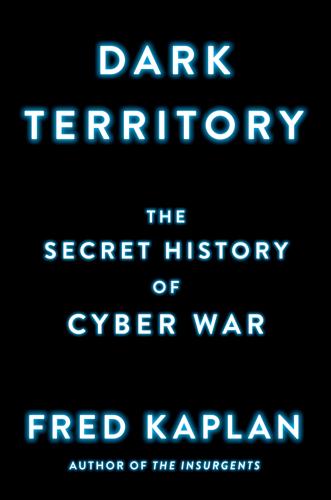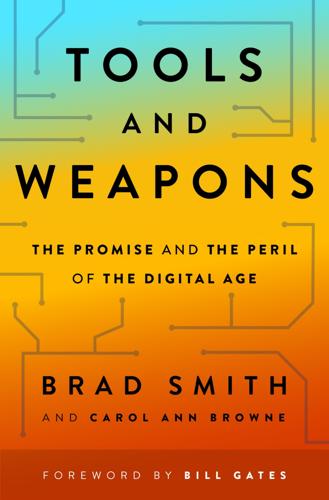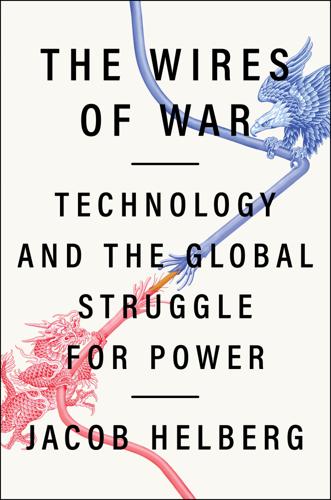Wargames Reagan
description: President Ronald Reagan reconsidered cyber warfare policy after watching the film 'WarGames'
9 results

Dark Territory: The Secret History of Cyber War
by
Fred Kaplan
Published 1 Mar 2016
After finishing his synopsis, Reagan turned to General John Vessey, the chairman of the Joint Chiefs, the U.S. military’s top officer, and asked, “Could something like this really happen?” Could someone break into our most sensitive computers? Vessey, who’d grown accustomed to such queries, said he would look into it. One week later, the general came back to the White House with his answer. WarGames, it turned out, wasn’t at all far-fetched. “Mr. President,” he said, “the problem is much worse than you think.” Reagan’s question set off a string of interagency memos, working groups, studies, and meetings, which culminated, fifteen months later, in a confidential national security decision directive, NSDD-145, signed September 17, 1984, titled “National Policy on Telecommunications and Automated Information Systems Security.”
…
When cyberspace is everywhere, cyber war can seep through every digital pore. During the transitions between presidents, the ideas of cyber warfare were dismissed, ignored, or forgotten, but they never disappeared. All along, and even before Ronald Reagan watched WarGames, esoteric enclaves of the national-security bureaucracy toiled away on fixing—and, still more, exploiting—the flaws in computer software. General Jack Vessey could answer Reagan’s question so quickly—within a week of the meeting on June 8, 1983, where the president asked if someone could really hack the military’s computers, like the kid in that movie—because he took the question to a man named Donald Latham.
…
The only computer that’s completely secure, he told them with a mischievous smile, is a computer that no one can use. Ware gave Lasker and Parkes the confidence to move forward with their project. They weren’t interested in writing sheer fantasy; they wanted to imbue even the unlikeliest of plot twists with a grain of authenticity, and Ware gave them that. It was fitting that the scenario of WarGames, which aroused Ronald Reagan’s curiosity and led to the first national policy on reducing the vulnerability of computers, was in good part the creation of the man who’d first warned that they were vulnerable. Ware couldn’t say so, but besides working for RAND, he also served on the Scientific Advisory Board of the National Security Agency.

Tools and Weapons: The Promise and the Peril of the Digital Age
by
Brad Smith
and
Carol Ann Browne
Published 9 Sep 2019
A good firsthand account was authored in 1989 by Paul Nitze, one of the principal arms negotiators of the Cold War era. Paul Nitze, From Hiroshima to Glasnost: At the Center of Decision, A Memoir (New York: Grove Weidenfeld, 1989). Back to note reference 9. David Smith, “Movie Night with the Reagans: WarGames, Red Dawn . . . and Ferris Bueller’s Day Off,” Guardian, March 3, 2018, https://www.theguardian.com/us-news/2018/mar/03/movie-night-with-the-reagans. Back to note reference 10. WarGames, directed by John Badham (Beverly Hills: United Artists, 1983). Back to note reference 11. Fred Kaplan, Dark Territory: The Secret History of Cyber War (New York: Simon & Schuster, 2016), 1–2.

The Hacker and the State: Cyber Attacks and the New Normal of Geopolitics
by
Ben Buchanan
Published 25 Feb 2020
The chaotic arena of cyber operations that this book portrays is not what scholars and military planners had long imagined. They had always envisioned cyber attacks as a kind of digital equivalent to nuclear war: devastating but rare. This notion first etched itself into American consciousness with the 1983 movie WarGames, which featured a young Matthew Broderick inadvertently bringing the world to the brink of nuclear Armageddon by hacking into military computers. President Ronald Reagan saw the film the day after its release and demanded that the government investigate its premise.4 Over the five presidencies since, an endless string of Washington blue-ribbon commissions has addressed the specter of digital destruction.
…
And before 2014 was over, one did. 8 Coercion “I NEVER THOUGHT I’D BE HERE BRIEFING ON A BAD SETH ROGEN MOVIE, sir,” an Obama aide said to the president. It was a preamble to an intelligence discussion in the White House. Obama asked how he knew the film in question, The Interview, was a bad one. The aide had a ready comeback: “Sir, it’s a Seth Rogen movie.”1 While WarGames kickstarted President Reagan’s interest in cybersecurity and There Will Be Blood served as an inspiration of sorts for some of the NSA’s counterintelligence efforts, The Interview caused an actual cyber attack all by itself. The film was a buddy comedy featuring Rogen and costar James Franco playing a pair of media personalities aiding a CIA-orchestrated assassination of Kim Jong-un.

The Code: Silicon Valley and the Remaking of America
by
Margaret O'Mara
Published 8 Jul 2019
So, too, did Secretary of State George Shultz, who had been a Northern Californian ever since the Nixon years, and who had close ties to Stanford and the Valley tech community. Just as it had in the early days of the Eisenhower Administration, the defense agenda once again took a high-tech turn.1 Just three months before WarGames’ release, Ronald Reagan had announced an audacious new program to create a sophisticated missile shield in space using satellites, lasers, and all kinds of computer-controlled technology. Northern Californian fingerprints were all over the proposal: the laser-based system had been championed loudly and early by Berkeley’s Edward Teller, father of the H-bomb and director of the Lawrence Livermore Laboratories.

The Wires of War: Technology and the Global Struggle for Power
by
Jacob Helberg
Published 11 Oct 2021
The Pentagon split off from ARPANET to form its own, more secure network: MILNET.19 Ironically, the network the military left behind would become a prime battlefield of the twenty-first century, as a creation of the first Cold War came to define the next one. * * * At about this time, President Ronald Reagan settled in for a Camp David viewing of the new Hollywood thriller WarGames. The president watched in alarm as a teenager (played by Matthew Broderick) hacked into his high school computer to change his grades, eventually finding his way into the North American Aerospace Defense Command and nearly causing World War III. Shaken, Reagan reportedly asked his chairman of the Joint Chiefs of Staff, “Could something like this really happen?”20 Reagan’s inquiry triggered an investigation into the federal government’s cyber vulnerabilities, culminating in a classified presidential directive on “telecommunications and automated information processing systems.”

Fancy Bear Goes Phishing: The Dark History of the Information Age, in Five Extraordinary Hacks
by
Scott J. Shapiro

Palo Alto: A History of California, Capitalism, and the World
by
Malcolm Harris
Published 14 Feb 2023
Of all the things in the history of the world that you wouldn’t let a child play with, the military-industrial complex’s early computer systems is a strong contender for the top slot. The SAGE operators themselves couldn’t stop bugs from making their nuclear response apparatus spontaneously ready itself for war. Even if they didn’t trigger Armageddon—the plot of WarGames (1983), a movie that apparently terrified the simpleminded President Reagan—kids would no doubt break the delicate systems that were at best always threatening to quit on skilled users. Not to mention the fact that computer time was pricey. At Lakeside in Seattle, the teenage Gates had access to a mainframe terminal as a sanctioned learning tool, something almost no one his age had ever had before.

The Future of War
by
Lawrence Freedman
Published 9 Oct 2017
Whether or not the intent was to make a film in the spirit of Fail-Safe or Dr. Strangelove, alerting the audience to the risks of an inadvertent nuclear catastrophe, the main thought left by WarGames was the ease with which an outsider might hack his way into the most vital computer networks, highlighting the risks posed by remote access and simple passwords. This was the message taken away by President Reagan, a friend of Lasker’s parents, who was invited to an early showing and was sufficiently disturbed to ask officials whether this movie had a basis in any conceivable reality. As the issue was investigated it turned out to be more serious than had been realised, leading to a set of studies into what was then described as ‘Telecommunications and Automated Information Systems Security’.6 This was a time of exploration into this developing networked world of information, a disembodied place where real things could be made to happen by anyone who could gain access.

Dawn of the Code War: America's Battle Against Russia, China, and the Rising Global Cyber Threat
by
John P. Carlin
and
Garrett M. Graff
Published 15 Oct 2018
The same year, 1983, that ARPANET was rewritten to be easily expandable, the new breadth of the network caused the Pentagon to grow concerned about its own online security. It split the military systems off onto their own network, known as MILNET. The dangers of connected devices suddenly seemed all too real. And that spring, the movie WarGames starred Matthew Broderick as a precocious teen hacker who accidentally nearly triggered nuclear war with the Soviet Union by hacking the military’s computers at its NORAD base in Colorado in an attempt to play video games. President Reagan, an avid movie buff, watched the drama at Camp David and returned to the White House with a direct query to his military leaders: “Could something like this really happen?” General John Vessey, the chairman of the Joint Chiefs, was surprised when he went to investigate the answer; he returned to the White House the following week and announced, “Mr.